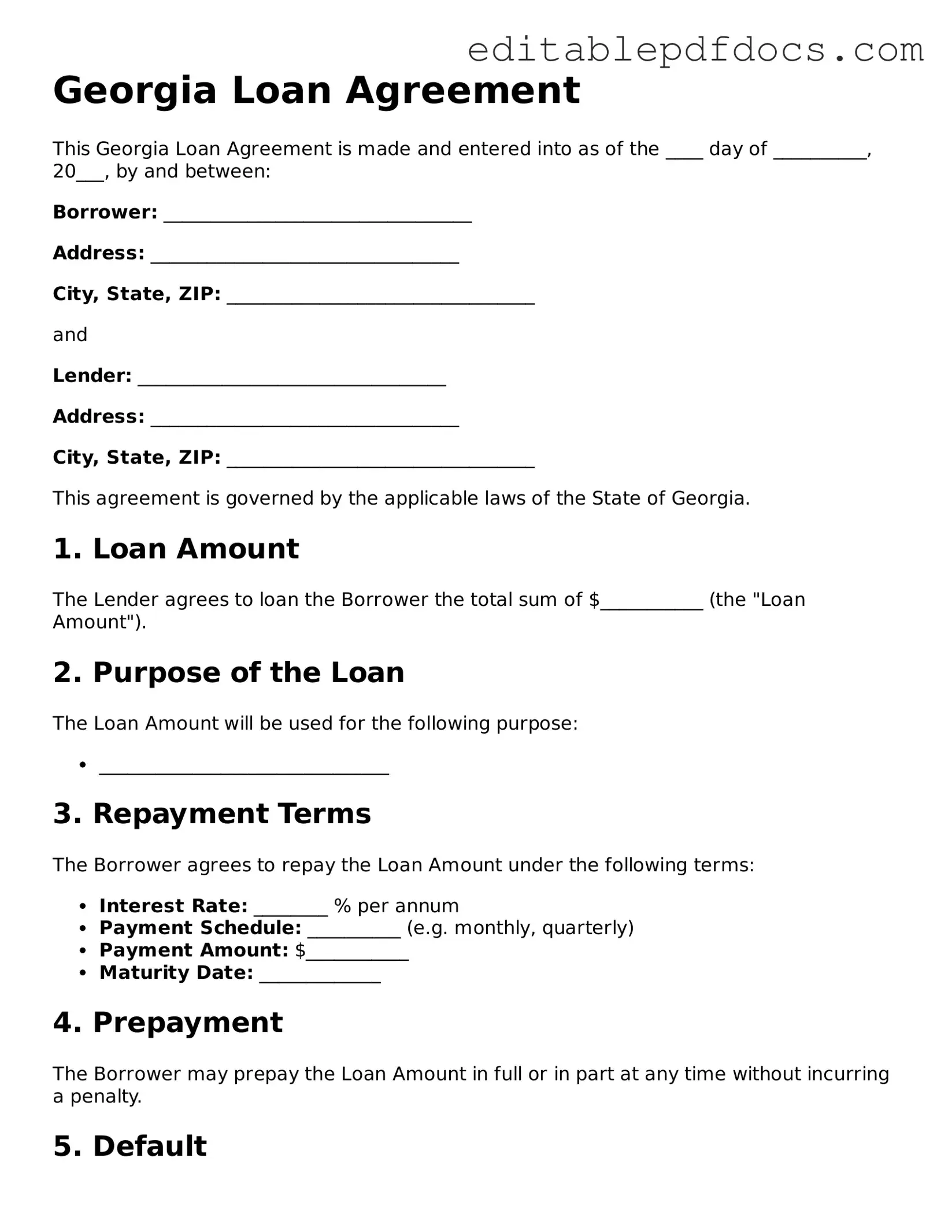Filling out a Georgia Loan Agreement form can be a straightforward process, but many individuals make common mistakes that can lead to complications down the line. Understanding these pitfalls can help ensure a smooth transaction. One frequent error is failing to provide accurate personal information. This includes names, addresses, and Social Security numbers. Inaccuracies can cause delays in processing the loan and may even result in the rejection of the application.
Another mistake often encountered is neglecting to read the terms and conditions thoroughly. Borrowers may sign the agreement without fully understanding the implications of the interest rates, repayment terms, and fees involved. This lack of attention can lead to unexpected financial burdens later on. It is crucial to grasp what is being agreed upon before finalizing the document.
Many applicants also overlook the importance of including all necessary documentation. Supporting documents, such as proof of income and identification, are typically required. Failing to attach these documents can stall the loan approval process or result in denial. Ensuring that all required paperwork is submitted can expedite the review process significantly.
In addition, some individuals may underestimate the significance of accurate loan amounts. Borrowers sometimes request more or less than they actually need, which can affect their ability to repay the loan. It's essential to carefully assess financial needs and only request what is necessary to avoid complications in repayment.
Another common error is not considering the repayment plan. Many people fill out the form without thinking about how they will manage repayments. Ignoring this aspect can lead to defaulting on the loan, which can have severe consequences. A clear repayment strategy should be established before signing the agreement.
Additionally, borrowers often fail to consult with a financial advisor or legal expert. While it may seem unnecessary, professional guidance can help individuals understand the nuances of the agreement and avoid potential pitfalls. Seeking advice can provide clarity and confidence in the decision-making process.
Lastly, many applicants do not keep copies of the completed Loan Agreement form. This oversight can lead to confusion later, especially if questions arise about the terms or if disputes occur. Keeping a record of all signed documents is essential for reference and accountability.
